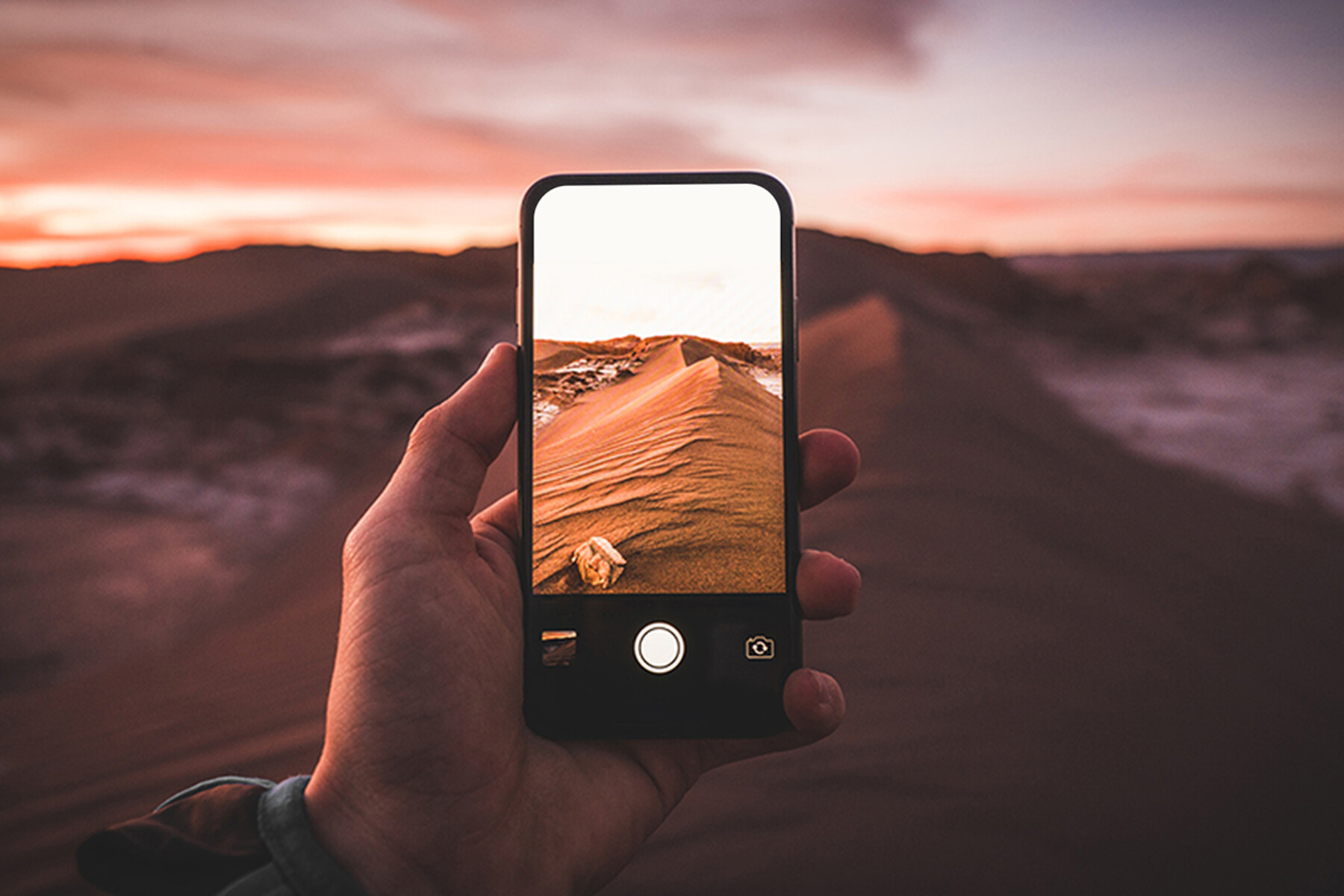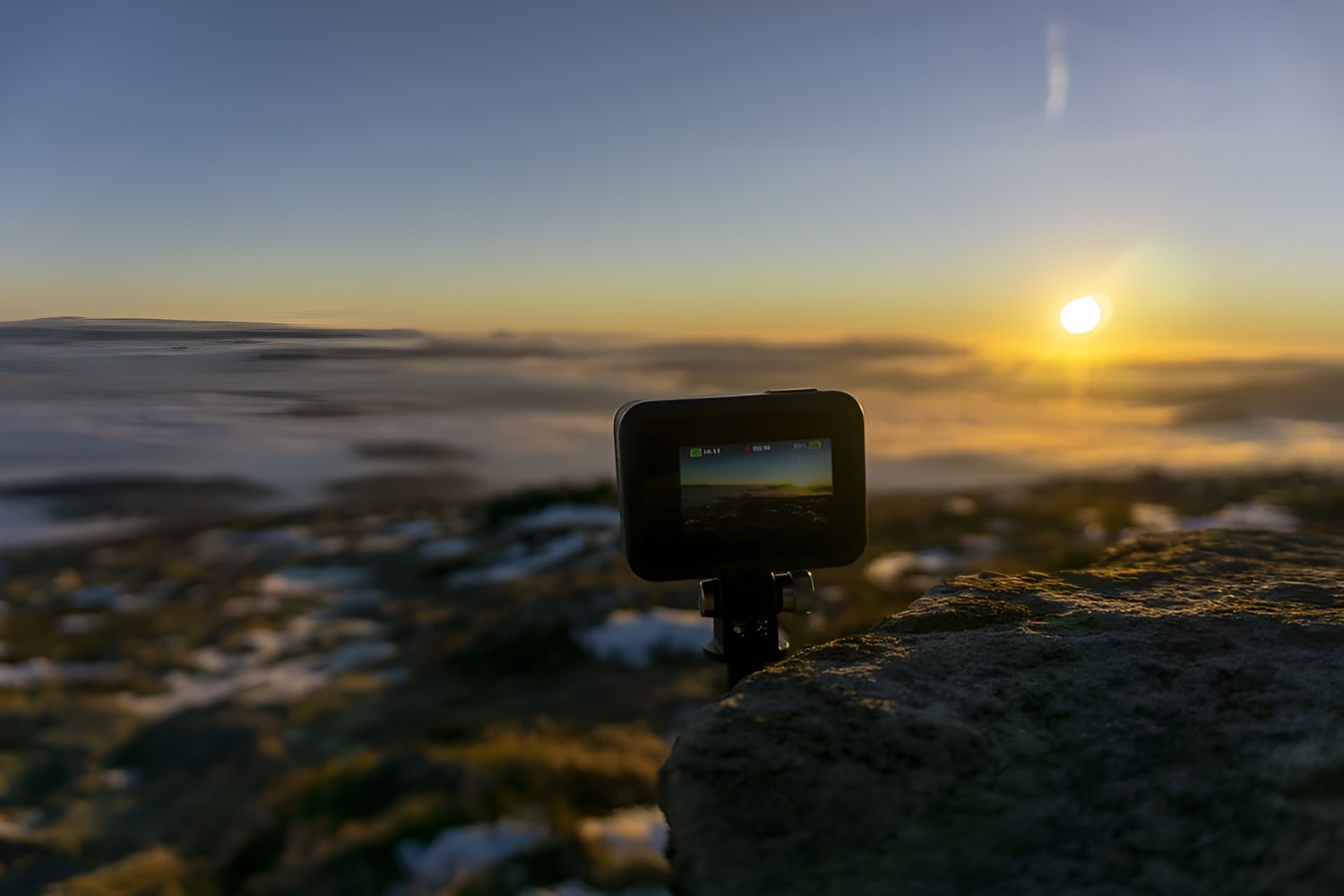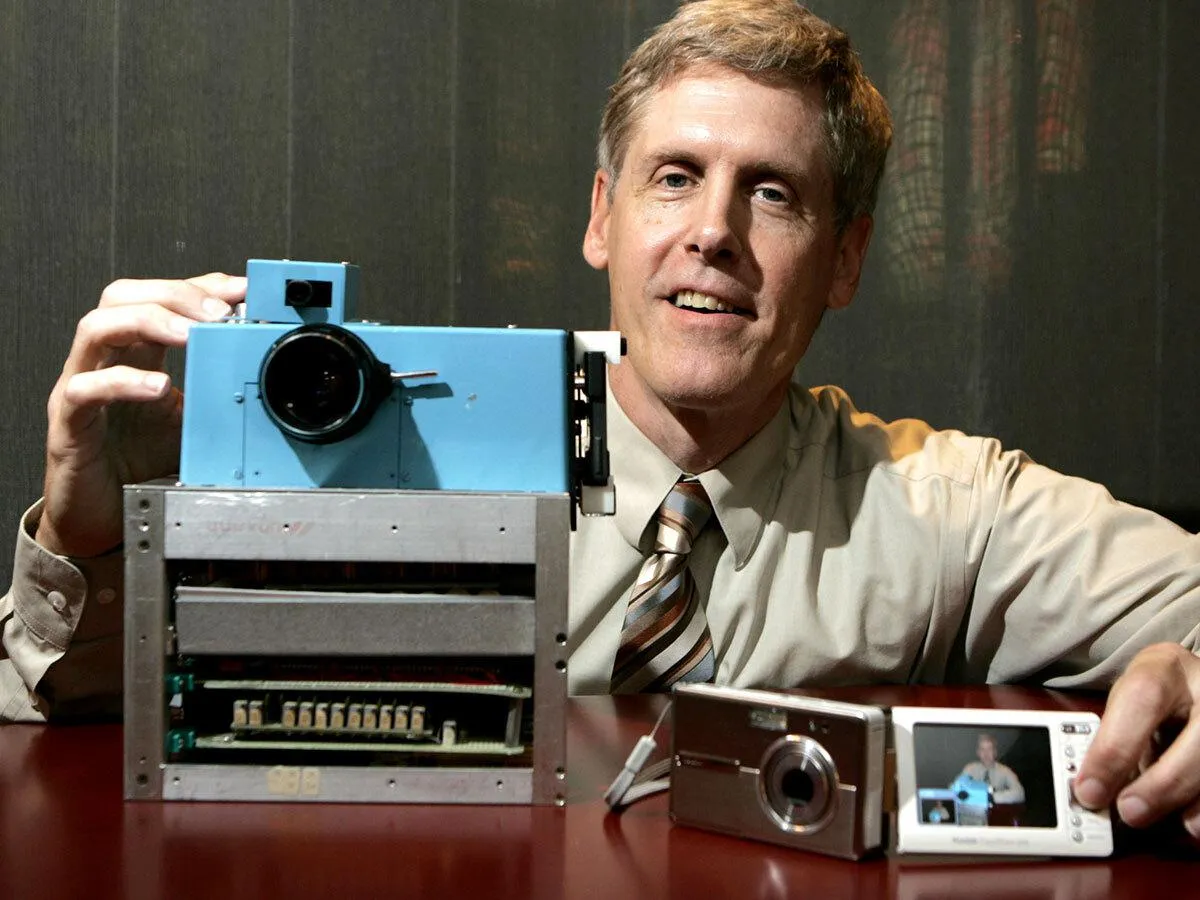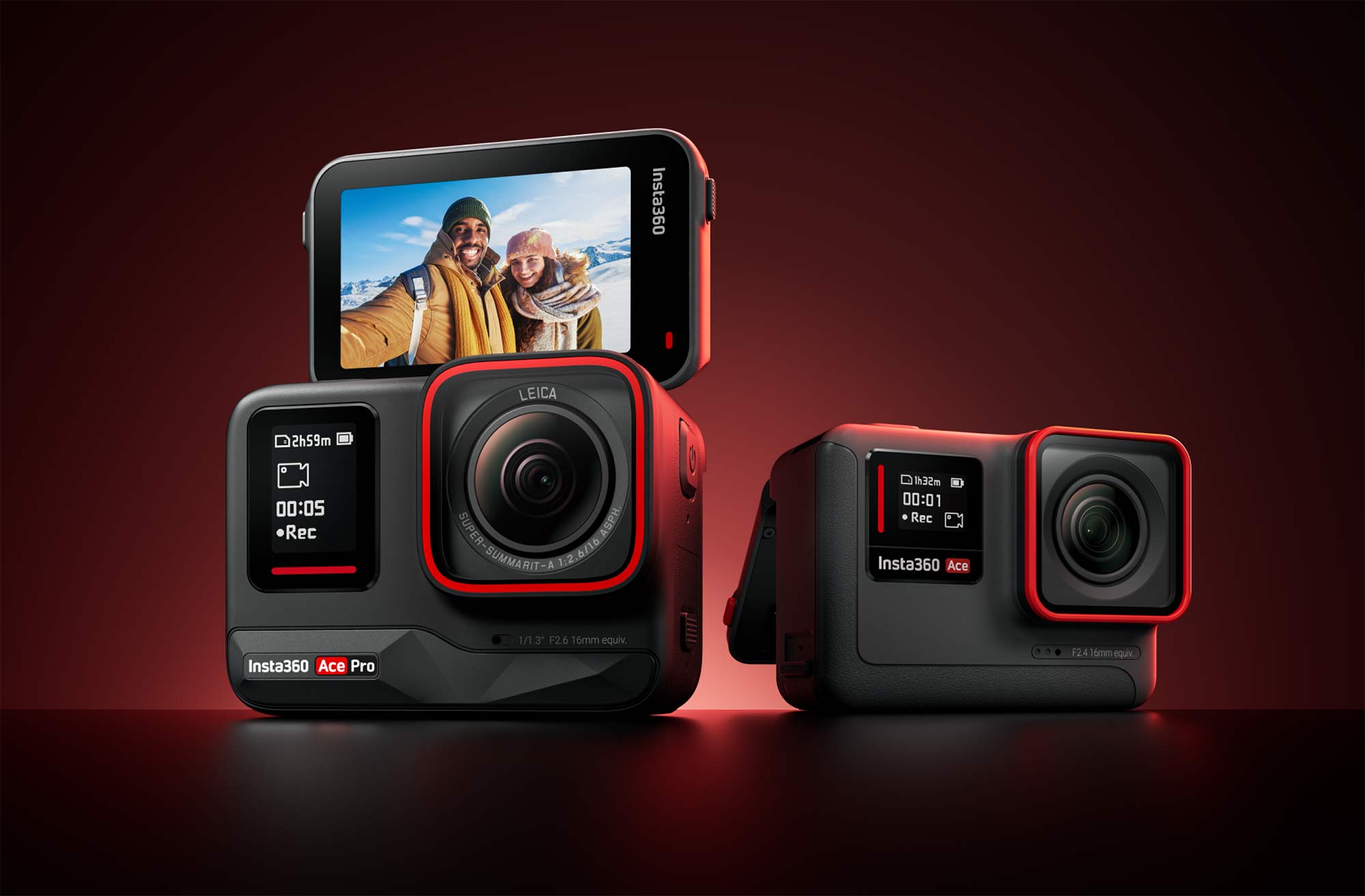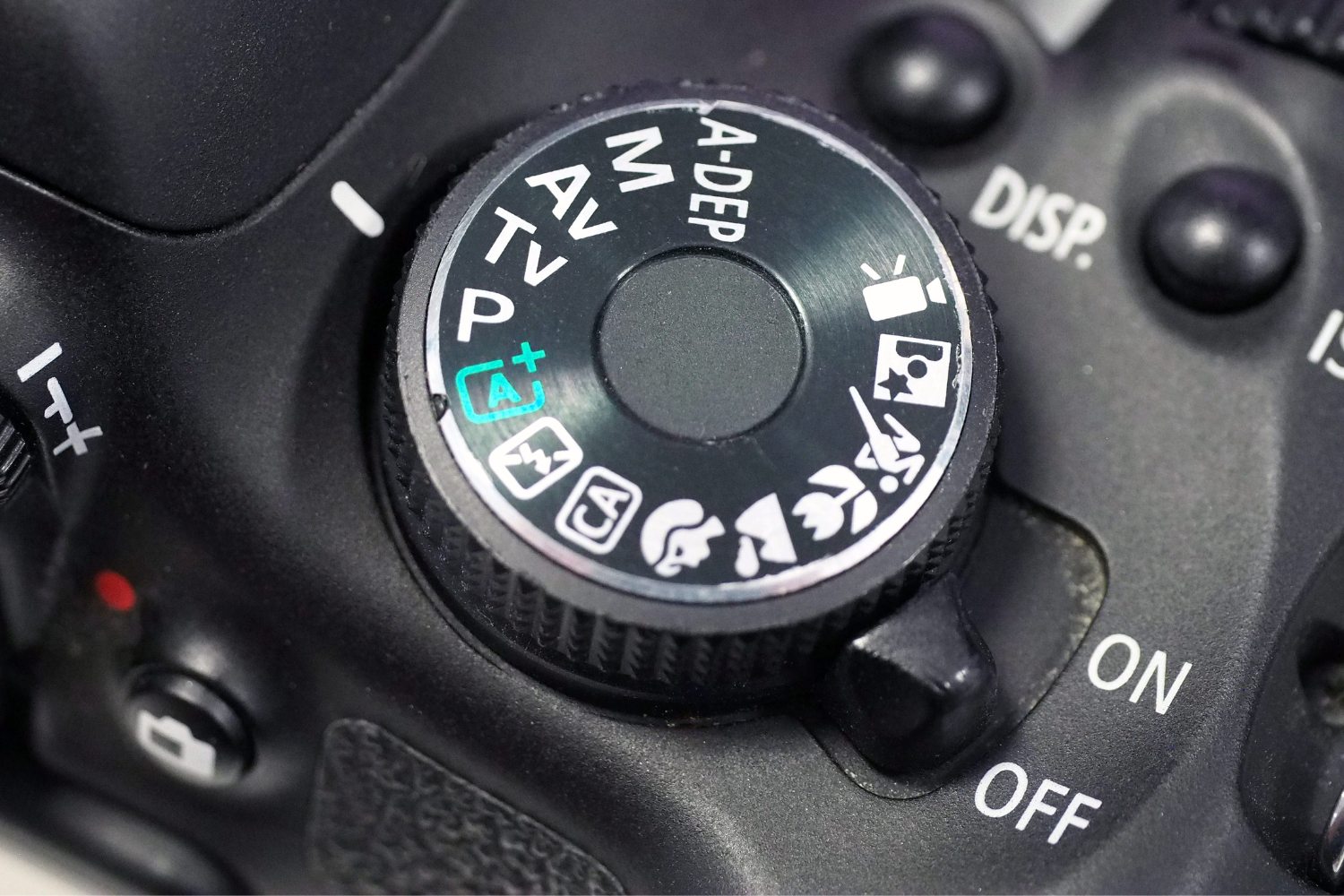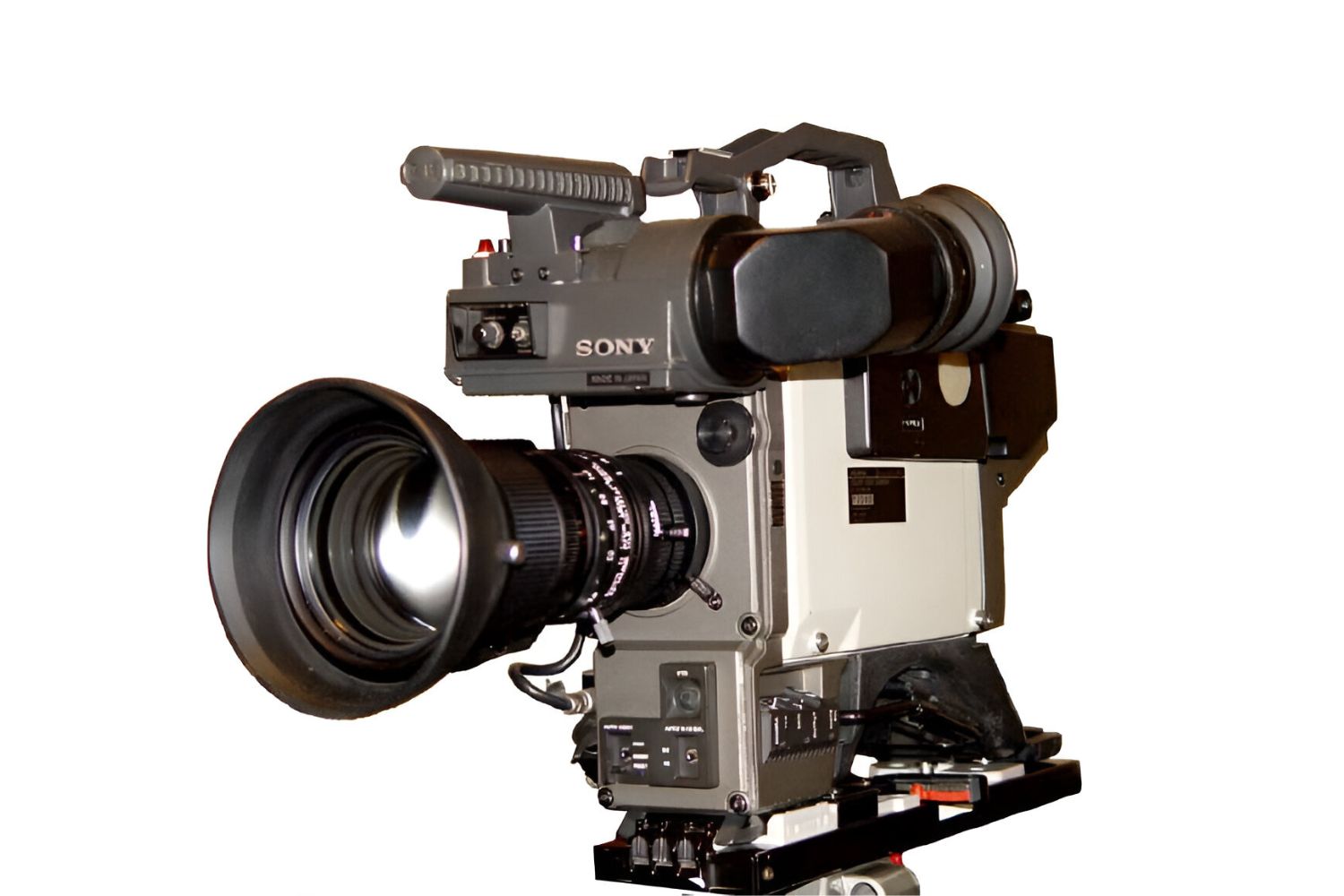Introduction
The invention of the smartphone camera has had a profound impact on the world of photography. Before the rise of smartphones, taking high-quality photos required carrying around bulky cameras and equipment. However, with the integration of advanced camera systems into smartphones, capturing moments has become easier and more accessible than ever before.
The convenience and accessibility of smartphone cameras have revolutionized the way we engage with photography. Now, anyone with a smartphone can take stunning photos with just a few taps on the screen. The days of lugging around heavy cameras and dealing with complicated settings are long gone.
Furthermore, the ability to instantly share photos on social media platforms has transformed the way we communicate and connect with others. With the rise of social media, our smartphones have become powerful tools for sharing our daily experiences and visual storytelling. We can now share our photos with friends, family, and even the entire world with a single click. This instant sharing feature has greatly accelerated the spread of visual content and has made photography a communal and interactive experience.
Moreover, the smartphone camera has ignited a new era of visual storytelling. With the ease of capturing photos and videos, people are now documenting their lives in a more comprehensive and immersive way. From mundane moments to extraordinary events, smartphones have enabled us to capture and share the essence of our experiences with stunning visuals. We no longer rely solely on words to convey our stories; instead, we can use images to evoke emotions, capture memories, and communicate complex narratives.
Additionally, the smartphone camera has not just made photography more accessible, but it has also revolutionized the art of editing and post-processing. With powerful editing apps available on our smartphones, we can enhance, retouch, and transform our photos with just a few swipes and taps. This has given amateur photographers the tools to achieve professional-looking results and has encouraged even more people to explore their creativity through photography.
Overall, the invention of the smartphone camera has marked a significant turning point in the history of photography. It has democratized the art form and empowered individuals to become creators and storytellers in their own right. From convenience and accessibility to social sharing and professional editing capabilities, the smartphone camera has truly transformed the way we capture, share, and experience the world around us.
Convenience and Accessibility
One of the key benefits of smartphone cameras is the convenience and accessibility they offer. Gone are the days when carrying a bulky camera was necessary to capture precious moments. With a smartphone in hand, anyone can instantly become a photographer.
Smartphone cameras are compact and easy to carry, fitting right in our pockets or bags. This portability ensures that we are always ready to seize the perfect photo opportunity as it arises. Whether it’s a breathtaking sunset or a spontaneous moment with friends, we can capture it with just a few taps on our smartphones.
In addition to portability, accessibility has also played a significant role in the popularity of smartphone cameras. Almost everyone these days owns a smartphone, making it a ubiquitous device. With the rise of smartphone cameras, photography is no longer limited to those with expensive professional cameras. Now, anyone can document their lives and express their creativity through photography.
Moreover, the user-friendly interfaces of smartphone cameras make them accessible to people of all ages and technical abilities. These cameras come with built-in features like autofocus and exposure adjustment, making it easier for beginners to capture high-quality images. The simplicity of smartphone cameras encourages more people to experiment and develop their skills as photographers.
Furthermore, smartphone cameras often come equipped with various shooting modes and settings that cater to different photography needs. From portrait mode for stunning portraits to night mode for capturing low-light scenes, these pre-set modes enable users to produce professional-looking photos without the need for advanced knowledge or extensive post-processing.
Overall, the convenience and accessibility of smartphone cameras have opened up a world of possibilities for photography enthusiasts. These devices have transformed our everyday lives, allowing us to capture and share moments with ease. Whether it’s a spontaneous snapshot or a carefully composed shot, smartphone cameras have made photography more accessible, enjoyable, and inclusive.
Social Media and Instant Sharing
The integration of smartphone cameras with social media platforms has revolutionized how we share and consume visual content. With a few taps on our smartphones, we can instantly share our photos and videos with friends, family, and even strangers around the world. This shift to instant sharing has had a profound impact on the way we communicate and connect with others.
Social media platforms like Instagram, Facebook, and Snapchat have become virtual galleries where we showcase our lives through visual storytelling. We can share our travel adventures, culinary experiences, and everyday moments in real-time. This instant sharing feature allows us to virtually invite others into our lives and share our experiences, creating a sense of connection and community.
The widespread adoption of smartphone cameras and social media platforms has also given rise to a new form of communication. We communicate through visuals, capturing the essence of our experiences and emotions in photos and videos. Visual content has the power to evoke emotions, spark conversations, and bridge cultural gaps. It has become a universal language that transcends words and connects people from all walks of life.
Moreover, the instant sharing of photos and videos has also fueled the growth of influencers and content creators. With their smartphones, these individuals can create engaging and visually appealing content that resonates with their followers. This has democratized the world of content creation, allowing anyone with a creative vision and a smartphone to gain an audience and influence the online community.
Furthermore, social media platforms have introduced new features and tools specifically designed for visual storytelling. Features like Stories and Reels on Instagram enable users to share short-lived, immersive visual content that provides a glimpse into their lives. These features encourage creativity and spontaneity, giving users the freedom to experiment and express themselves through photography and videography.
Overall, the integration of smartphone cameras with social media platforms has transformed photography from a personal hobby to a communal experience. The ability to instantly share photos and videos has not only changed the way we communicate but also opened up opportunities for creativity, connection, and collaboration. We can now participate in a global visual conversation, sharing our perspectives and experiences through the lens of our smartphones.
The Rise of Visual Storytelling
The integration of smartphone cameras into our daily lives has paved the way for the rise of visual storytelling. With the ability to capture photos and videos at any moment, we have become avid storytellers, documenting our lives and sharing our experiences with the world.
Visual storytelling allows us to convey emotions, experiences, and ideas through images. It goes beyond mere documentation and transforms our memories into narratives that can be shared and understood by others. Smartphone cameras have made visual storytelling accessible to all, empowering individuals to become the authors of their own visual narratives.
One of the hallmarks of visual storytelling is the ability to capture the essence of a moment or an event. With smartphone cameras, we can freeze a split-second in time and preserve it forever. Whether it’s a candid smile, a breathtaking landscape, or a powerful moment of human connection, smartphone cameras allow us to capture the essence of the story we want to tell.
Furthermore, visual storytelling goes beyond individual images. With the advent of social media platforms, we now have the opportunity to curate a series of photos and videos to tell a complete story. The ability to share multiple images in a single post or through stories provides a platform for more comprehensive and immersive storytelling.
Visual storytelling also transcends language barriers. Images can convey emotions and messages that words may struggle to express. When we share our visual stories, we engage with a diverse audience that may speak different languages or come from different cultures. Visual content allows us to connect with people on a universal level, evoking emotions and sparking conversations that go beyond linguistic boundaries.
Moreover, visual storytelling has become a powerful form of self-expression. Through carefully composed images and thoughtfully selected moments, we can share our perspectives, beliefs, and experiences with others. Whether it’s capturing the beauty of nature, highlighting social issues, or expressing our personal journey, smartphone cameras have become a tool for self-discovery and the exploration of our own unique narratives.
Overall, the rise of visual storytelling with smartphone cameras has transformed the way we communicate and share our experiences. It allows us to capture the essence of our lives, convey emotions, connect with others, and express our individuality. With every photo and video we capture, we become part of a larger visual narrative that is constantly evolving and shaping the way we perceive the world.
Revamping Traditional Photography
The advent of smartphone cameras has not only made photography more accessible but has also revamped traditional photography practices. These compact devices have introduced a new wave of innovation and creativity, challenging the boundaries of what was previously deemed possible in the world of photography.
One significant impact of smartphone cameras is the ability to experiment with new perspectives and techniques. With their lightweight and compact form factor, smartphones enable photographers to explore unconventional angles and capture shots that were previously difficult to achieve. Whether it’s low-angle shots, aerial photography, or unique close-ups, smartphone cameras have expanded the creative possibilities for photographers.
In addition to pushing the boundaries of perspective, smartphone cameras have also introduced new features and tools that enhance the photographic experience. HDR (High Dynamic Range) mode, for example, allows for stunning image quality by blending multiple exposures. This feature adds richness and depth to photos, ensuring that even challenging lighting conditions can be captured with striking detail.
Another area where smartphone cameras have reshaped traditional photography is in the realm of long-exposure photography. Through advanced software algorithms, smartphone cameras can now simulate long-exposure effects without the need for additional equipment such as tripods or neutral density filters. This opens up new creative opportunities, allowing photographers to capture flowing water, light trails, and other mesmerizing long-exposure effects on the go.
Furthermore, smartphone cameras have introduced AI (Artificial Intelligence) capabilities that enhance the overall photography experience. Features like scene recognition and subject tracking automatically optimize camera settings for specific scenarios, ensuring that photographers can capture the best possible image with minimal effort. This integration of AI technology with smartphone cameras simplifies the technical aspect of photography, enabling photographers to focus more on artistic expression and composition.
Additionally, smartphone cameras have revolutionized the world of instant film photography. Apps and filters allow users to mimic the nostalgic look and feel of vintage cameras, giving photos a distinct and timeless aesthetic. This blending of traditional and modern techniques has appealed to a new generation of photographers who appreciate the charm of analog photography but desire the convenience of digital capabilities.
Overall, smartphone cameras have breathed new life into traditional photography, pushing the boundaries of what can be achieved with a compact device. From innovative perspectives and techniques to the integration of AI and instant film aesthetics, these devices have redefined the rules of photography and sparked a new wave of creativity in the industry.
Enhanced Editing and Post-Processing
The integration of advanced editing capabilities within smartphone cameras has transformed the way we approach post-processing and image enhancement. With a myriad of editing apps available at our fingertips, we now have the power to transform our smartphone-captured photos into professional-looking masterpieces.
One of the key advantages of smartphone editing apps is their user-friendly interface. These apps provide intuitive tools that make it easy for both amateur and experienced photographers to enhance their photos. From adjusting brightness and contrast to fine-tuning colors and applying filters, the editing apps offer a wide range of options to bring out the best in our images.
Moreover, smartphone editing apps often come equipped with advanced features like selective editing and retouching capabilities. These tools allow us to make precise edits and enhancements to specific areas of an image, giving us more control over the final result. We can remove blemishes, correct imperfections, and even completely change the look and feel of a photo.
In addition to traditional editing options, smartphone cameras have introduced powerful AI-based algorithms that automatically enhance photos with a single tap. These intelligent features analyze the image and make adjustments to optimize brightness, color balance, and sharpness. This automated enhancement takes the guesswork out of editing, allowing us to achieve stunning results quickly and effortlessly.
Furthermore, smartphone cameras have revolutionized the concept of post-processing by offering a wide range of editing apps and presets. These apps provide a plethora of creative filters and effects that can instantly transform the mood and style of a photo. From vintage film simulations to dramatic black and white conversions, the options are endless. This abundance of editing choices encourages experimentation and personalization, allowing photographers to develop their distinct editing style.
The integration of editing and post-processing capabilities within smartphone cameras has made it possible to achieve professional-quality results on the go. There is no longer a need for complicated software or extensive training to enhance our photos. With just a smartphone and the right editing app, we can unleash our creativity and elevate our images to new heights.
Overall, the enhanced editing and post-processing capabilities of smartphone cameras have democratized the art of image enhancement. These devices have empowered photographers of all levels to transform their photos into visual masterpieces. Whether it’s a quick touch-up or a full-blown creative edit, smartphone editing apps have made it easier than ever to unleash our artistic potential and create captivating visuals.
Capturing Everyday Moments
One of the significant impacts of smartphone cameras is their ability to capture the beauty and significance of everyday moments. Before the advent of smartphones, mundane and spontaneous moments often went undocumented. However, with the convenience and accessibility of smartphone cameras, we now have the power to freeze these fleeting moments and turn them into lasting memories.
Smartphone cameras have become an extension of our daily lives, allowing us to document and cherish everyday experiences. Whether it’s a delicious meal, a beautiful sunset, or a heartwarming interaction with loved ones, we can capture these moments effortlessly. The immediacy of smartphone cameras ensures that we never miss a chance to preserve these precious memories.
Moreover, smartphone cameras enable us to capture spontaneous moments that may otherwise be lost forever. We can quickly whip out our smartphones and capture a child’s joyful laughter, a pet’s playful antics, or a friend’s funny gesture. These candid moments often hold the most genuine and heartfelt memories, and smartphone cameras allow us to freeze these fleeting moments in time.
In addition to traditional photography, smartphone cameras have given birth to the phenomenon of “micro-moments.” These are brief, everyday occurrences that may seem insignificant at first glance but carry immense meaning and emotional value. From capturing the first sip of morning coffee to documenting a spontaneous encounter with a stranger, smartphone cameras have made it easier than ever to appreciate and cherish these micro-moments.
Furthermore, smartphone cameras allow us to create a visual timeline of our lives, highlighting the passage of time and the changes that occur over the years. We can scroll through our photo galleries and albums and witness the transformation of ourselves, our loved ones, and our surroundings. This documentation of our journey adds depth and meaning to our memories, creating a rich tapestry of experiences and emotions.
Ultimately, the ability to capture everyday moments with smartphone cameras enables us to find beauty and significance in the ordinary. It encourages us to live in the present and embrace the magic of the everyday. With a simple click, we can turn a fleeting moment into a cherished memory, forever preserving the essence of our daily lives.
Blurring the Line Between Amateur and Professional
The invention of the smartphone camera has blurred the traditional line between amateur and professional photography. With their advanced technology and versatility, smartphone cameras have enabled casual photographers to capture stunning images that rival those taken by professionals.
One of the key factors contributing to this blurring of the line is the constant improvement in smartphone camera hardware. Today’s smartphones boast high-resolution sensors, advanced image stabilization, and sophisticated lens technology. These features allow users to capture images with sharpness, clarity, and dynamic range that were once reserved for professional-grade cameras.
In addition to the hardware advancements, smartphone cameras are accompanied by increasingly powerful software. The integration of AI algorithms and computational photography has further bridged the gap between amateur and professional photography. These intelligent algorithms assist in automatic exposure adjustment, noise reduction, and even subject recognition, resulting in images that are optimized for quality and visual appeal.
Furthermore, smartphone cameras offer a range of manual controls and shooting modes that were previously exclusive to professional cameras. Users can adjust settings such as ISO, shutter speed, and white balance to have more control over the final outcome of their photos. This level of customization allows enthusiasts and amateur photographers to experiment and explore their creativity with greater freedom.
Additionally, the availability of advanced editing apps and software has empowered smartphone photographers to further enhance and refine their images. With a wide range of editing tools and features at their disposal, enthusiasts can fine-tune exposure, adjust colors, and add artistic effects to their photos. This puts them on par with professionals who have access to similar editing capabilities.
Moreover, the rise of social media platforms has provided a platform for amateur photographers to showcase their work to a larger audience. With the ability to share their images instantly, smartphone photographers can receive feedback and recognition for their artistic endeavors. Social media platforms have democratized the photography industry, allowing talented amateurs to gain exposure and recognition alongside professional photographers.
Overall, the advancements in smartphone camera technology, coupled with robust editing capabilities and the power of social media, have blurred the line between amateur and professional photography. Smartphones have democratized the art form, giving anyone with a passion for photography the tools and opportunities to capture and share remarkable images. As a result, the distinction between amateur and professional photography has become less defined, opening up new possibilities and creative avenues in the ever-evolving world of smartphone photography.
The Selfie Phenomenon
The emergence of the smartphone camera has ushered in the era of the selfie, a cultural phenomenon that has swept across the world. Selfies, self-portraits taken with a smartphone camera, have become a ubiquitous part of modern-day culture, transforming the way we capture and share our self-representation.
The convenience and accessibility of smartphone cameras have made it easier than ever to take selfies. With the front-facing camera, we can frame ourselves in the shot and capture our own image with just a few taps on the screen. This has empowered individuals to curate their online presence, express themselves, and share their personal stories in a visually engaging way.
Selfies have become more than just a means of self-expression; they have become a form of communication and connection. Through selfies, we can share glimpses of our lives with our friends, family, and wider social networks. It allows us to visually connect with others, sparking conversations and fostering a sense of camaraderie.
Moreover, the rise of social media platforms has fueled the selfie phenomenon. Platforms like Instagram, Snapchat, and TikTok have become virtual stages for users to share their selfies with the world. These platforms have introduced filters, augmented reality effects, and editing capabilities that enable users to enhance their selfies and create unique visual narratives.
Selfies not only provide an opportunity for self-expression but also play a role in self-empowerment. They allow individuals to control their self-image, presenting themselves in the way they want to be seen. Selfies have become a tool for self-affirmation and confidence-building, enabling people to embrace their individuality and celebrate their uniqueness.
However, the selfie phenomenon has also sparked debates and critiques. Some argue that the obsession with selfies promotes narcissism and a superficial focus on appearance. Others raise concerns about privacy and the potential negative impacts on mental health due to the constant need for validation through likes and comments.
Despite the criticisms, selfies continue to dominate our online and offline experiences. They have become an integral part of our modern visual culture, shaping how we perceive ourselves and others. Selfies have evolved beyond mere photographs; they are a means of self-empowerment, communication, and connection.
Ultimately, the selfie phenomenon reflects our innate desire to be seen and acknowledged. It has reshaped the way we engage with photography and how we construct our digital identities. Whether loved or disliked, the selfie has undoubtedly left an indelible mark on our society, forever changing the way we capture and present ourselves to the world.
The Impact on Camera Manufacturers
The rise of smartphone cameras has had a significant impact on traditional camera manufacturers. With the increasing popularity and advancements in smartphone camera technology, camera manufacturers have had to adapt their strategies to meet the evolving demands of consumers.
One of the key areas affected by the growth of smartphone cameras is the point-and-shoot camera market. Point-and-shoot cameras, which were once popular among casual photographers, have seen a decline in sales due to the convenience and accessibility of smartphone cameras. With the ability to take high-quality photos on smartphones, consumers are finding less of a need to invest in standalone compact cameras.
Furthermore, the impact is not limited to point-and-shoot cameras; smartphone cameras have also disrupted the market for entry-level interchangeable lens cameras (ILCs). These ILCs, which were favored by photography enthusiasts and beginners, have faced stiff competition from the ever-improving camera capabilities of smartphones. Smartphone cameras now offer comparable image quality, versatility, and ease of use, making them a more attractive option for those starting their photography journey.
In response to the growing dominance of smartphone cameras, camera manufacturers have had to pivot and adapt their focus. Many manufacturers have shifted their attention towards developing advanced mirrorless cameras, which offer superior image quality, versatility, and customization options compared to smartphones. By targeting professionals, avid enthusiasts, and photographers seeking higher-quality image capture, camera manufacturers have found a niche market that complements rather than directly competes with smartphone cameras.
Camera manufacturers have also strived to differentiate their products by focusing on features that smartphones cannot yet replicate fully. This includes advancements in sensor technology, low-light performance, optical zoom capabilities, and robust post-processing options. By delivering features that go beyond the capabilities of smartphones, camera manufacturers aim to attract users who prioritize image quality and advanced functionality.
Moreover, camera manufacturers have recognized the importance of connectivity and integration with smartphones. Many cameras now feature Wi-Fi and Bluetooth connectivity, allowing seamless transfer of images from the camera to smartphones for quick sharing on social media platforms. By embracing smartphone integration, camera manufacturers aim to provide users with the best of both worlds – the image quality and versatility of traditional cameras combined with the convenience of smartphone sharing.
In summary, the impact of smartphone cameras on camera manufacturers has been significant. The convenience, accessibility, and advancing capabilities of smartphone cameras have led to a decline in sales for traditional point-and-shoot cameras and entry-level ILCs. However, camera manufacturers have responded by focusing on developing advanced mirrorless cameras and incorporating features that differentiate their products from smartphone cameras. The coexistence of smartphone cameras and traditional cameras continues to shape the photography industry, offering users a wide range of options to capture and express their visual creativity.
Conclusion
The invention of the smartphone camera has revolutionized the world of photography in numerous ways. The convenience and accessibility of smartphone cameras have empowered individuals to capture moments with ease, blurring the line between amateur and professional photography. The integration of smartphone cameras with social media platforms has transformed how we communicate and share visual content, sparking the rise of visual storytelling and enabling a new era of self-expression. The enhanced editing and post-processing capabilities of smartphone cameras have democratized the art of image enhancement, allowing users to achieve professional-quality results on the go. Smartphone cameras have also provided a platform for capturing and cherishing everyday moments, turning mundane occurrences into cherished memories. Additionally, the selfie phenomenon has emerged, reshaping how we present ourselves and fostering a sense of connection through visual self-expression.
The impact of smartphone cameras has not been limited to casual photography; it has also had a significant effect on camera manufacturers. The rise of smartphone cameras has reshaped the market for point-and-shoot cameras and entry-level interchangeable lens cameras. In response, camera manufacturers have shifted their focus towards developing advanced mirrorless cameras and leveraging features that differentiate their products from smartphones. Manufacturers have recognized the importance of connectivity and integration with smartphones to provide users with a seamless capture and sharing experience.
In conclusion, the invention of the smartphone camera has transformed the photography landscape. It has made photography more accessible, connected us through visual storytelling, empowered self-expression, and challenged traditional industry dynamics. While smartphone cameras have disrupted the market, camera manufacturers have adapted by focusing on advanced functionality and embracing smartphone integration. As we continue to embrace the power of smartphone photography, we can expect further advancements, innovations, and exciting possibilities on the horizon.







